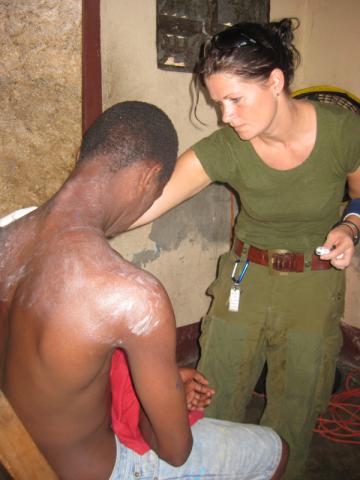
The founder of the small, grassroots Kingston, Ontario-based organization Help Tammy Help Haiti was looking forward to a ground breaking ceremony to mark the beginning of construction on a new medical clinic in the massive shantytown Cité Soleil, on the outskirts Port-au-Prince. Instead, on January 26, the 33-year-old will go there to help rebuild in the wake of the devastating January 12 quake.
While Help Tammy Help Haiti is not yet a registered charity, Cari Wolsey, one of the directors, says they have applied for charitable status with Canada Revenue Agency. Babcock has been able to do their good work down there through the support of people who have seen the small projects they have achieved to date, such as the completion of a water tower and plans for the medical clinic. Now, she needs help more than ever before in the organization’s two-year history.
Tammy Babcock already had a trip planned to Haiti this month in anticipation of her latest humanitarian trip to the poorest nation in the Western Hemisphere. That was before the 7.0-magnitude earthquake struck, destroying thousands of buildings in the capital region of Port-au-Prince, decimating an already shaky infrastructure and leaving a death toll estimated by the Pan American Health Organization to be more than 200,000.
The founder of the small, grassroots Kingston, Ontario-based organization Help Tammy Help Haiti was looking forward to a ground breaking ceremony to mark the beginning of construction on a new medical clinic in the massive shantytown Cité Soleil, on the outskirts Port-au-Prince. Instead, on January 26, the 33-year-old will go there to help rebuild in the wake of the devastating January 12 quake.
While Help Tammy Help Haiti is not yet a registered charity, Cari Wolsey, one of the directors, says they have applied for charitable status with Canada Revenue Agency. Babcock has been able to do their good work down there through the support of people who have seen the small projects they have achieved to date, such as the completion of a water tower and plans for the medical clinic. Now, she needs help more than ever before in the organization’s two-year history.
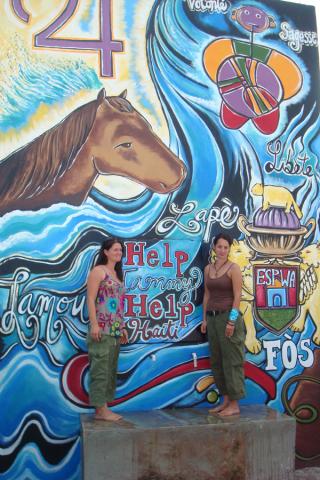
“We’re looking for all emergency first-aid supplies, anything that we can get our hands on,” Babcock tells Samaritanmag. “Of course, we’re going to have to be able to look after ourselves when we’re there, so we’re going to need some meal replacements for ourselves. I’m also looking at two things and hoping to get some support. We need a solar pack so we can charge things like cell phones and we’re going to need some flashlights. One important tool is going to be a portable water purifier, where someone can pour contaminated water in and be able to drink it. There’s going to be water around, but it’s going to be contaminated.”
Babcock still hasn’t heard directly from everyone in her “family” as she calls them, the native Haitians who have embraced her and her work; the members of the United Nations forces who sometimes act as her de facto bodyguards; and her partner there, Robinson Remedor, who is fluent in English, Spanish, French and Creole and able to act as a liaison with humanitarian organizations in Cité Soleil. Two days after the 7.0 quake, Babcock heard that Remedor had survived, but his father had been killed.
“They’re not just Robinson and my security staff; they’re my family,” says Babcock. “They’re the only reason why I am alive. They keep me safe there. They’re the ones that love me and protect me. But there’s the people at the guest house I stay at as well; they keep security on me as well, and same with the UN. Oh my goodness, their headquarters, it’s gone. So many people dead and missing, and the Brazilians [UN soldiers], some of them have passed away. The Brazilians are like my guardians as well.”
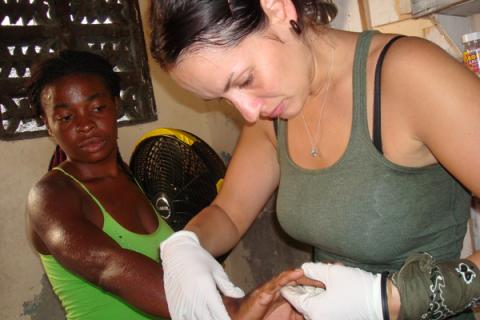
“Haiti is the poorest country in the Western Hemisphere with 80 percent of the population living under the poverty line and 54 percent in abject poverty,” according to the statistics on the Central Intelligence Agency’s web site. “Two-thirds of all Haitians depend on the agricultural sector, mainly small-scale subsistence farming, and remain vulnerable to damage from frequent natural disasters, exacerbated by the country’s widespread deforestation.”
Even before the quake, Cité Soleil had no stores, no electricity, no sewer and water service, and most of the nearly 500,000 people estimated to be living there do so in tiny, decrepit, floorless shacks, all crammed together, Babcock recounts. The area has been rife with gang violence for years.
“At times, it gets pretty bad,” she says. “The criminals of the country, when they are wanted, they come and hide in Cité Soleil. So sometimes those communities might be in good standing, considering, but then they are taken over by an outside gang. If there’s anybody that works in that area and leave to go to the market for the day, when they return home, they’ve being robbed by these people.
“There’s a lot of sickness and disease,” Babcock adds. “It’s so sad because there are no jobs for these people. They moved into Cité Soleil because they believed there was going to be a job for them. And, really, if they can get their hands on weapons, why wouldn’t they use them?”
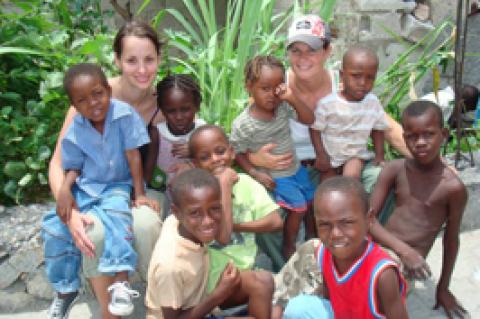
Help Tammy Help Haiti is run from Babcock’s home. According to the website, www.helptammyhelphaiti.com, “We put all donated money and supplies directly to the front line – in person. Help Tammy Help Haiti is comprised of a volunteer board of directors. We have no staff and no part of your donation will go towards administration, travel or living expenses while in the field – these are paid directly out of the director’s pockets.”
Much of the medical material they take down to perform first-aid is donated by Kingston-area doctors and pharmacies, while donated cash is used to purchase more medicine and other supplies from Haitian pharmacies while they are in the country. Babcock usually takes a team of two to four volunteers, sometimes more, who take as much medical supplies, clothing and other items needed in Haiti, as the airlines allow. They all have basic first-aid medical training. While Babcock does not have any professional development credentials, she does have the ability to build relationships with local Haitians, as well as with other relief organizations, such as Doctors Without Borders and the United Nations.
“I didn’t really want to join a group. I really would prefer to be my own boss, and know that 100 percent of that money is going towards what they promised it to go towards. I know the only way for me to be 100 percent sure of that is if I’m in control of that,” Babcock explains.
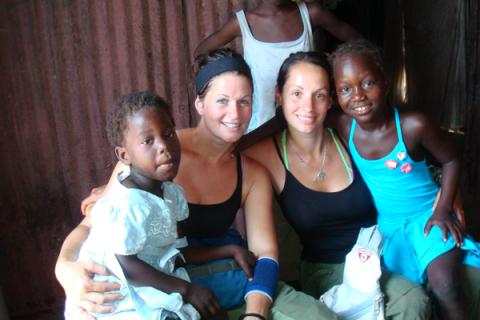
“When I was down there for one of my first trips, I got in between gunfire between the United Nations and a local gang, and at that point in time, I thought I was dead. I thought I was going to be killed,” she relays. “After the situation was over, we were able to continue the work. We were actually distributing water at the time, and it was almost like it was the best day of my life, just because I survived it.
“The children are standing around and they’re looking at me like I am crazy, because I was terrified. I think you could see my heart pounding through my shirt. The children were laughing. It was like this is something normal for them. This happens all the time. They are totally desensitized to it.
“Cari and I were almost kidnapped when we were last down there [in November],” she says, glossing over the statement as if it’s no big deal. “The most important thing, to the people there, is that they see us come back, and they know we care, because we could leave and never come back. We’re terrified sometimes, but we come back the next day because we care so much for them.”
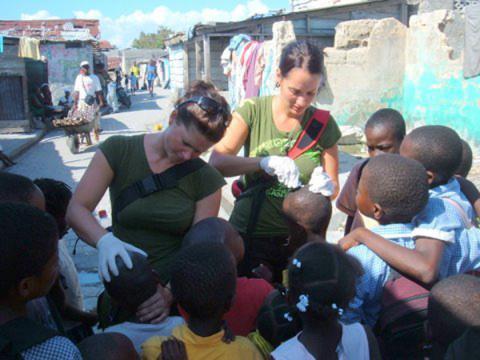
The water tower was completed in July, and there is no word yet if it is still standing. The next item on Babcock and Help Tammy Help Haiti’s agenda was to build a permanent medical clinic, where not only she and her colleagues could work, but where other visiting doctors or local doctors could practice medicine, distribute drugs and other medical paraphernalia in a safe and secure location. That is now on the back burner for obvious reasons.
At this point, without being able to communicate with her friends in Haiti, her plan when she arrives on the 26th is basic — show up, figure out a way to get from the airport to Cité Soleil, then go from there.
“I know all the emergency organizations are going to be busy, and I have a feeling that even on Jan. 26, it’s going to be me going down there and assessing things on my own. I am not a stranger to that. That’s what I did two years ago. I went down there and I found myself in the middle of a slum, working on a water tower and then a medical clinic,” Babock says. “I am not afraid of that. I know my way around Port-au-Prince.
“What I am looking at doing is going down, and hoping the people are secure enough so that I can move into the heart of Port-au-Prince, and help in the Kenscoff area, the mountainous region, where there’s buildings built on buildings, built on buildings, that I know have 100 percent collapsed. They’re going to need help for some time to come, and that’s where I know they need extra hands.”
She said much of the media reportage has barely mentioned Cite Soleil, which is why she is so eager to get in touch with her contacts there, and also to see how much damage is in that area.
“I do have faith that Cité Soleil might have fared pretty well considering they have nothing,” Babcock says. “They have tin shacks, and the odds of people losing their lives because their tin shack has fallen down are a lot better than ones living in the areas with concrete buildings, which is the middle class or high class area up in Pétionville. It’s really the only thing that’s keeping me together, the faith that my staff, my friends, and family there in Cité Soleil are okay physically, that hopefully they haven’t been injured. But I don’t know. I just don’t know.”
2020 Frame Skate x Nike SB Dunk Low "Habibi" Chile Red/White-Lucky Green-Black CT2550-600 – With Sneaker